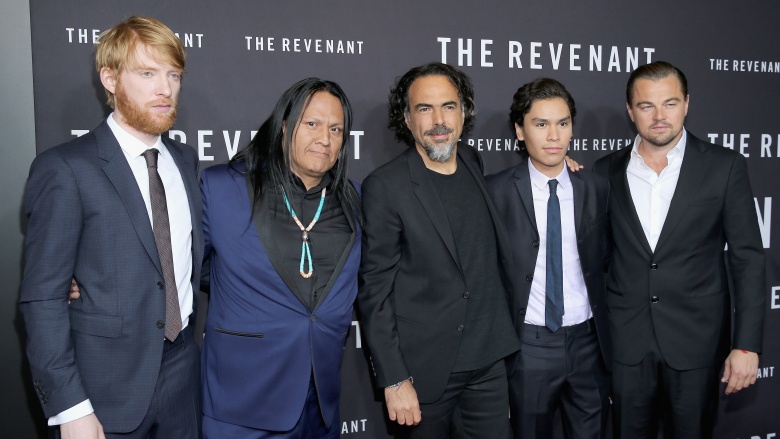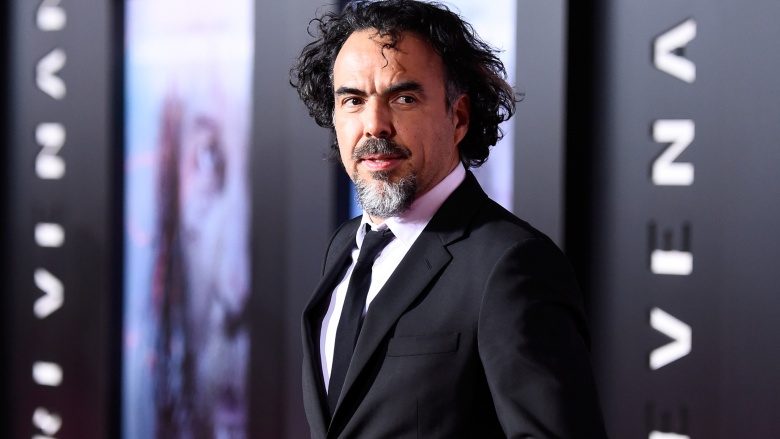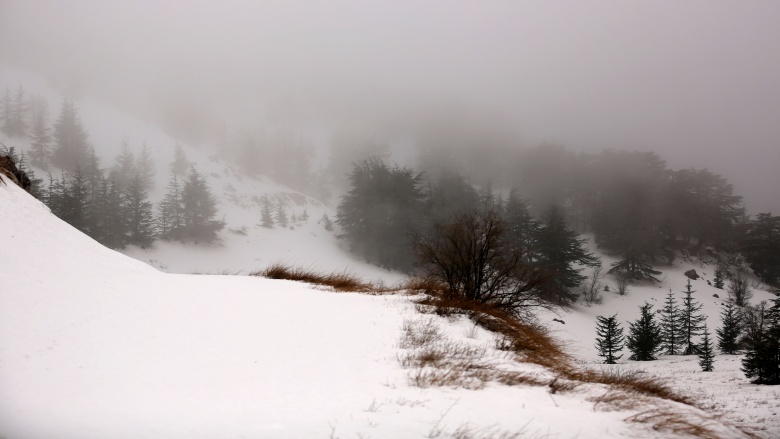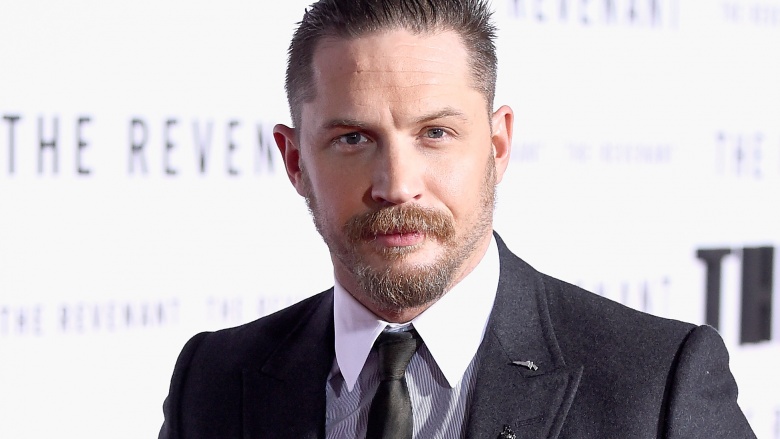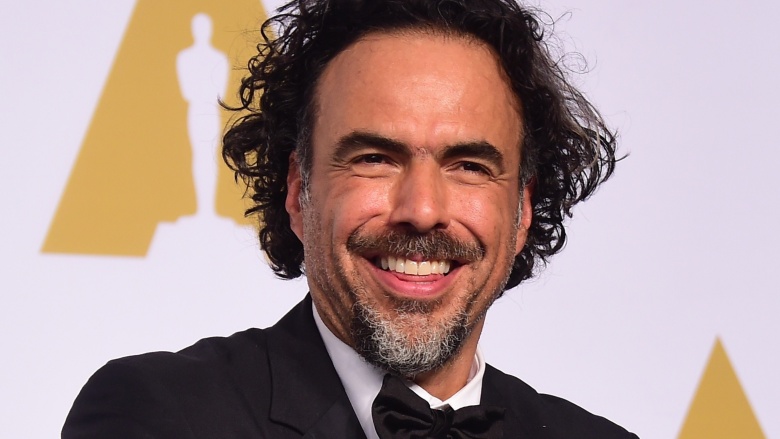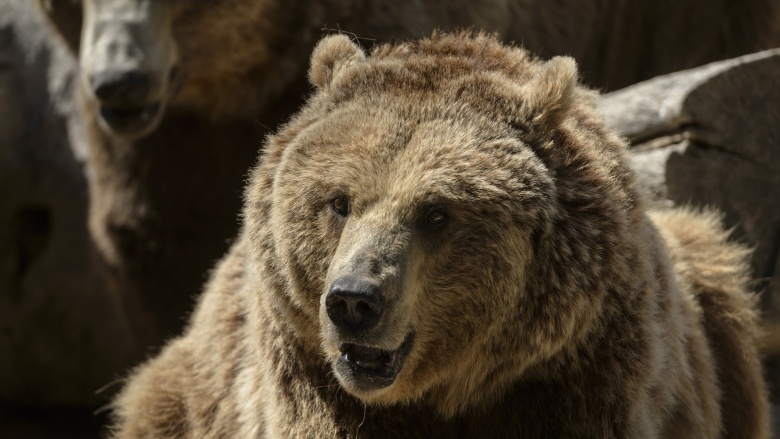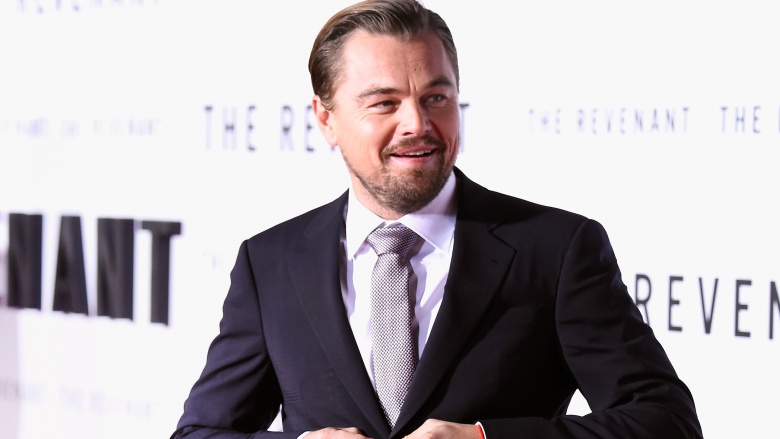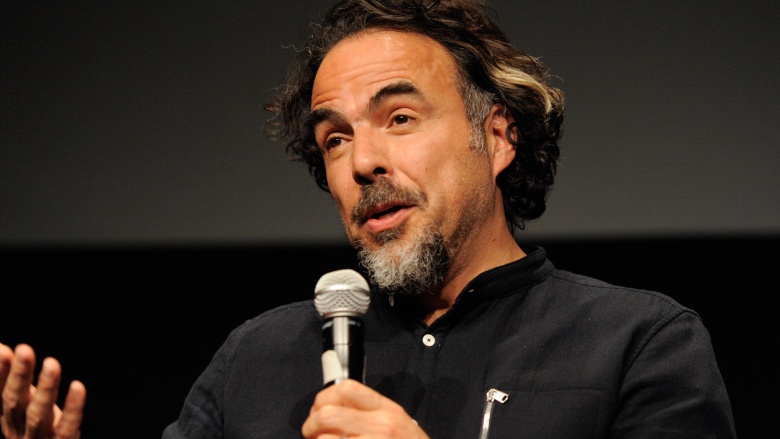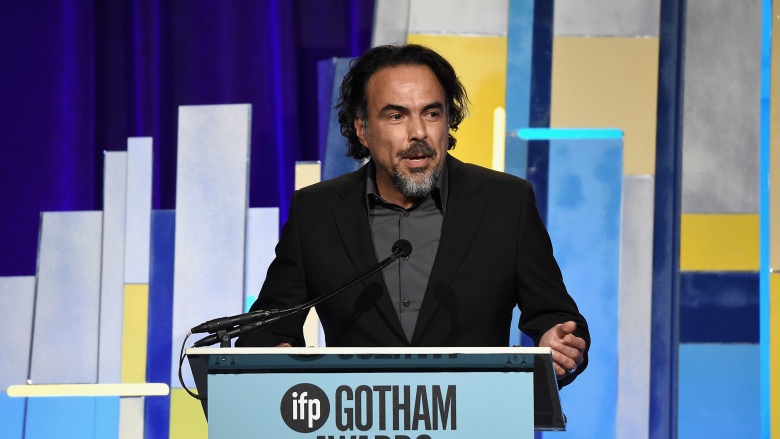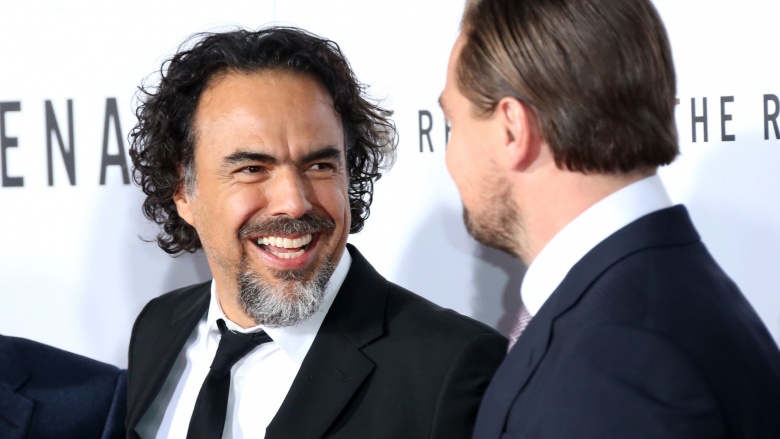What Really Happened Behind The Scenes Of The Revenant
In reviews, 2015's The Revenant has been called "stark" and "uncompromising." While those terms provide an apt description for the film, they only scratch the surface of what went on during production. Freezing conditions, bears, revolting crew members, and a naked man all comprise the tale that is the making of Alejandro González Iñárritu's The Revenant. And just like the film's protagonist Hugh Glass, the behind-the-scenes details survive with a vengeful fury. Enjoy!
The logistics of the whole thing
Even before production on The Revenant began, the movie carried a frightful reputation. The film's star Leonardo DiCaprio told Yahoo, "This was a film that had been floating around for quite some time, but nobody was crazy enough to really take this on, simply because of the logistics of where we needed to shoot and the amount of work and rehearsal that would have to be done." But one man who was crazy enough did emerge to helm this fable of revenge. That man was acclaimed director Alejandro González Iñárritu, and everyone involved in the film was going to find out just how crazy he really was.
Alejandro Gonzalez Inarritu: genius or madman?
Mexican auteur Alejandro González Iñárritu admitted to Interview magazine in October 2014 that he has a reputation, but he earned it for a good reason. "I always know what the character needs," he said, continuing, "And it's scary sometimes for actors or actresses, but I try to help them to use the fear to get there." Basically, he does whatever's necessary to make his movies, no matter what. From a creative standpoint, that makes for great movies. But for the thespians who've worked with him, it sounds like a cautionary tale. And for the cast and crew of The Revenant, this warning came too late, as principal filming began that month.
Shooting conditions
Iñárritu abhors using green screen. This meant the movie, set in the frigid Dakota Territory winter, needed to be shot in similar locations. So Iñárritu brought his production team to places like Fortress Mountain in the Canadian Rockies to capture that authenticity. Iñárritu also brought them to Ushuaia, Argentina, where temperatures dip to a brisk -20 degrees Fahrenheit, when he realized Canada wasn't cold enough. Luckily for cast and crew, Argentina was just right. Otherwise, he probably would've dragged them to Antarctica or somewhere in the Arctic Circle. To Yahoo, DiCaprio said of the experience, "[I was] enduring freezing cold and possible hypothermia constantly." It's surprising DiCaprio didn't go on a quest for revenge against the director once filming ended.
Shooting schedule
Production wasn't just a weekend shoot, either. It lasted nine months. Part of this was due to the need to switch locations from Canada to Argentina. Now, it wasn't all bad. A two-week December break in filming was extended to six weeks. But while that gave everyone a bit more time to relax and recover from shooting thus far, it caused at least two problems. One, co-star Tom Hardy had to drop out of Suicide Squad (which is probably to Hardy's benefit in the long run); and two, it extended filming once it resumed. And even then, shooting didn't wrap in time. In an interview with Deadline, Iñárritu said it all would end in April or May of 2015, but it didn't end until August. So a lot of people on set must have gotten justifiably cranky.
Staggering crew turnover
Like a man possessed, Iñárritu powered through production, taking everyone with him, for the most part. But not everyone working on the film when production began made it to the end. Nobody died, but IATSE union president Damian Petti told The Hollywood Reporter that "15 to 20 crew members were fired from or quit" working on the film. Obviously, the people who quit got fed up and left. But some of the fired crew members "raised safety issues." Also, conference calls to discuss safety concerns were basically ignored. Most of the issues raised were usually in regard to the extreme weather conditions in which everyone worked. But those probably weren't the biggest safety issues...
DiCaprio vs. the bear
One of the most talked about scenes in the film is when DiCaprio's Hugh Glass fights a bear. Many were left wondering how that scene was shot because, remember, Iñárritu doesn't like using green screen. When asked about it, DiCaprio declined explaining how the scene was shot or if he had to fight a real bear. However, he told Yahoo the scene required cables, him "flying around the forest," and a lot of rehearsal. He also said "it was pretty agonizing to do." Well, duh. Bear fighting, real or fake, isn't supposed to be easy. Around then, DiCaprio probably regretted not playing Jennifer Lawrence's husband in Joy. But possibly fighting a real bear wasn't the most dangerous scene for DiCaprio.
Raw liver
As most folks have heard by now, DiCaprio ate raw Bison liver for the film. According to Variety, he volunteered. But someone, like a director could have stopped him (or maybe given him some fava beans to go with it). In all seriousness, eating raw liver is dangerous, as it's a storage area of toxins the body can't expel. So that's what DiCaprio ate. But at least he didn't get dragged, naked, across the frozen ground. That special honor went to someone else.
Dragging a naked guy across the ground
According to The Hollywood Reporter, Iñárritu decided a nude character needed to get dragged over the ground (ouch) during a battle scene for some reason. The director maintains he felt concern over the actor's safety, and genitalia, and provided a plastic sheet for protection. He even claims he asked the actor several times if he was okay, to which the actor affirmed that he was, according to Iñárritu. Also in the interview, Iñárritu doesn't fail to mention just how concerned he was for the actor, probably insisting too much. However, crew members contradicted Iñárritu's version of the events, saying instead, "the actor was in pain" during the several takes. Why Iñárritu felt the scene needed a nude man dragged through it remains unclear.
A producer was banned from the set
Yes, Iñárritu banned producer Jim Skotchdopole, whom he also worked with on Birdman, from the set. Apparently, all the on-set dangers, going over budget, and the scheduling issues were not only due to Skotchdopole's poor planning but also his failing to keep Iñárritu informed, according to The Telegraph. Keeping him informed of what, no one knows. Regardless, Iñárritu denies banning him, claiming to have reassigned Skotchdopole to another location instead, because it sounds nicer of course. But that other location must have been just as hellish as the set because Skotchdopole ultimately left the film entirely.
Inarritu has no shame
Despite all the craziness and controversy surrounding The Revenant, Iñárritu's opinion is that it's all worthwhile. His belief is that whatever occurred on-set was necessary for not just the benefit of the film but for crew and audiences as well. In his words, according to The Hollywood Reporter, "Revenant is about survival, and the actors and crew benefited from having to make it in nature," continuing "When [audiences] see the film... [they] will say, 'Wow.'" Wow, indeed.

